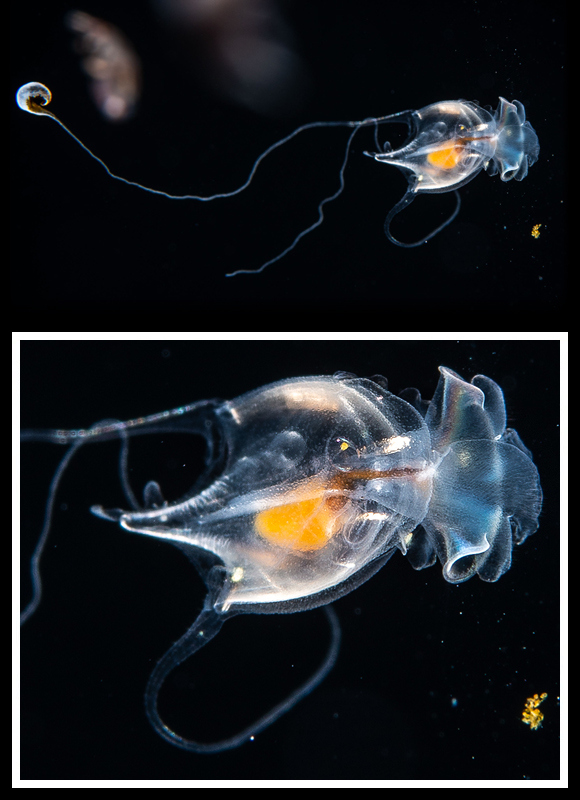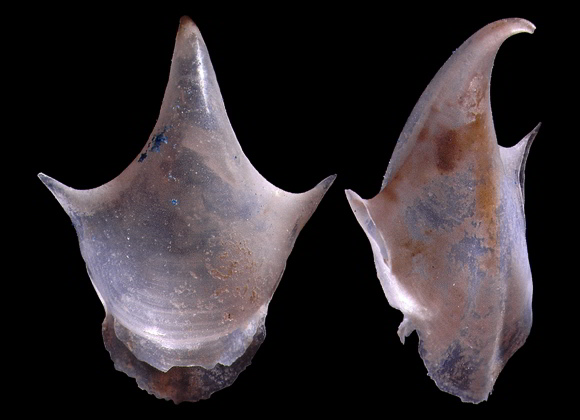
Synonyms: pellucidus, curvata, depressa…
500m deep, Banco di Santa-Lucia, 65km (35 naut.) north of the Cape Corse (Capicorsu), Ligurian Sea, NW. Italy. 5,5mm.
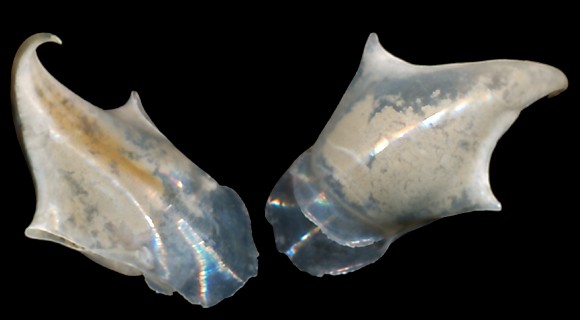
80m deep, Sorrento, Napoli, Campania, SW. Italy. 6mm.
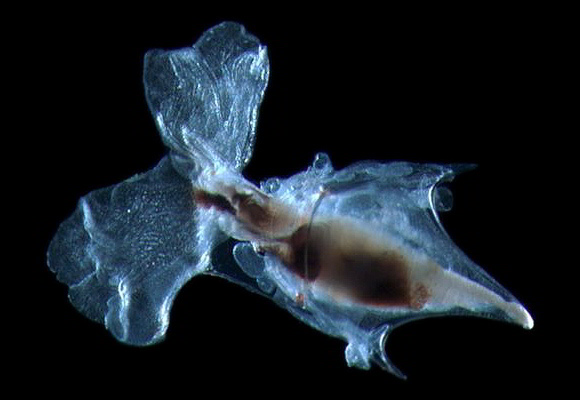
A specimen in the Census of Marine Zooplankton – (CC BY-NC-SA). A set of tests run on some juvenile animals of inflexa has revealed the danger, for this species and, by extension, for the whole genus, family and maybe order, of ocean acidification: maldevelopments of the shell, or complete absence in low pH environments (Comeau & al., 2010).
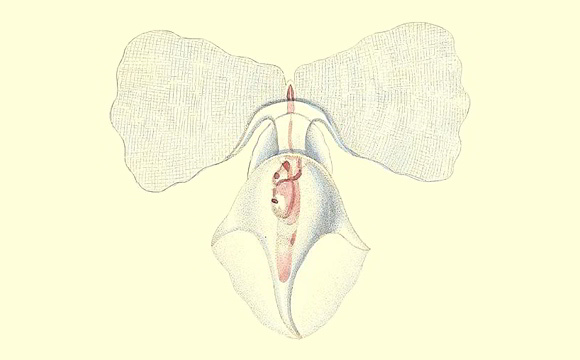
« Hyalaea. Testa oblonga, depressiuscula, infra convexa et levigata, superne tricostata, spinis lateralibus parvis compressis acutis, cuspide terminali maxima elongata, ad apicem superius reversa et uncinata; apertura ovato-transversa, labro infero reflexo acuto, labro supero subtriangulari denticulato. »
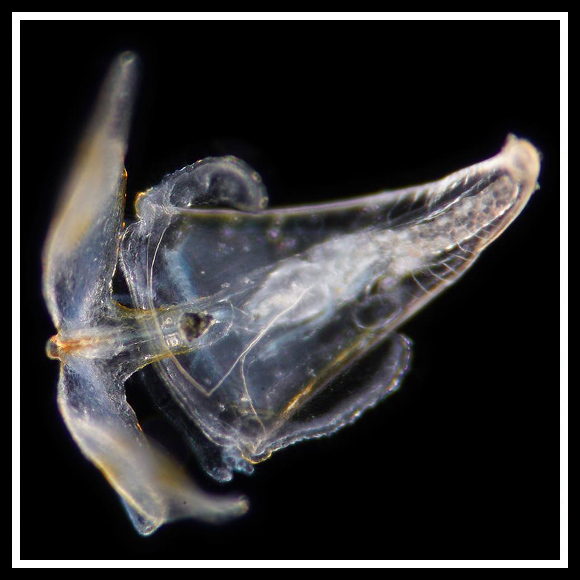
« …its dorsal side is domed and smooth, the two lateral angles are raised; the posterior angle is inflected and topped with a rather prolonged spike. The ventral side is flatter, and marked with a rib, hardly salient in the middle. The aperture of the shell is unciform, and extends in slit on each side. » – C. A. Lesueur: “Mémoire sur quelques nouvelles espèces d’animaux mollusques et radiaires recueillis dans la Méditerranée près de Nice”, Nouveau Bulletin des Sciences, par la Société Philomatique de Paris tome 3, Paris 1813, p.285. – Above, a specimen collected at 1m deep, uvala Stari Trogir, Sevid area, Split-Dalmatia Comitat, W. Croatia. Original picture provided by V. Cetinić-Koća (HR) – (CC BY-NC-SA).
